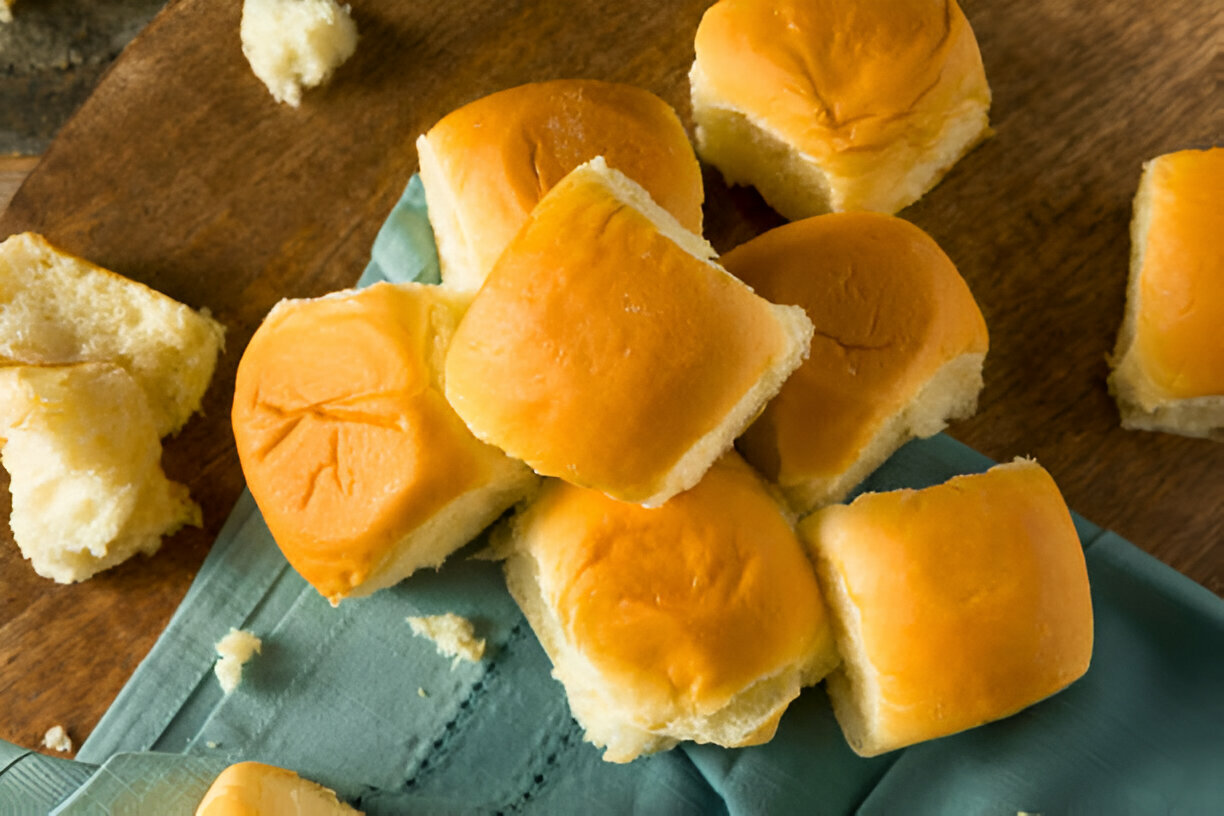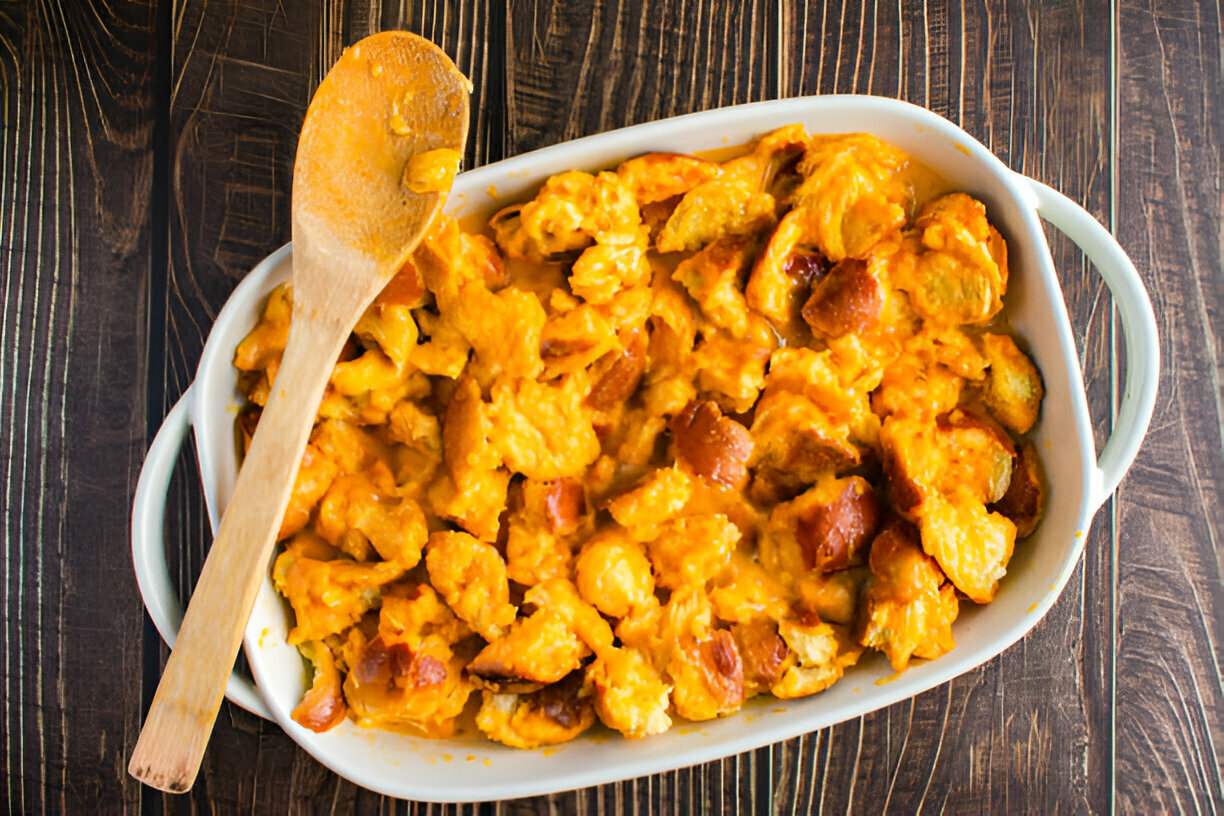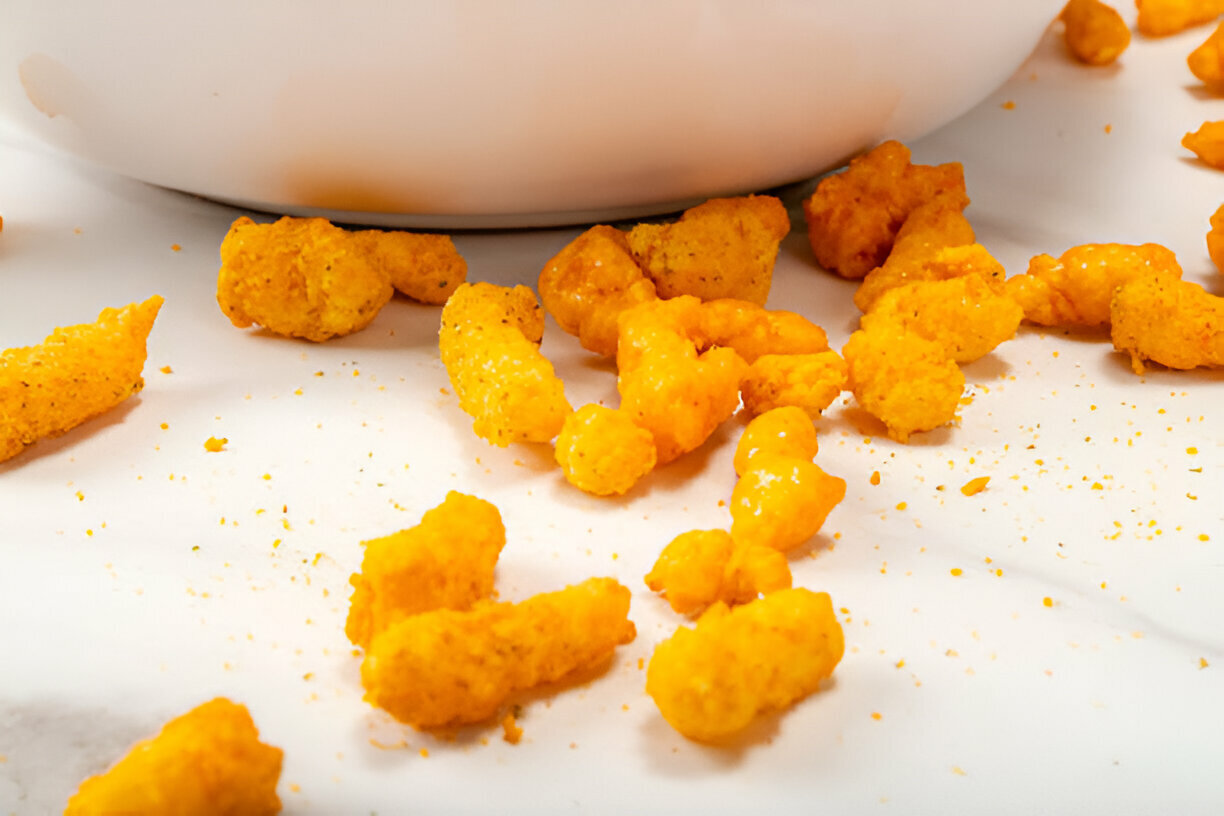Pasta carbonara is a classic Italian dish celebrated for its rich flavors and creamy texture, making it a favorite among pasta lovers worldwide. Traditionally prepared with simple yet high-quality ingredients, this dish epitomizes rustic Italian cooking. At its core, pasta carbonara typically features al dente pasta enveloped in a velvety sauce made from eggs, cheese, and cured pork, resulting in a comforting and satisfying meal that is as delightful to make as it is to eat.
Using authentic ingredients is crucial for creating a true carbonara experience. The nuances of flavor in this dish hinge on the quality of the ingredients, particularly the type of pasta, the cured meat, and the cheese used. For the most authentic taste, opting for guanciale, a type of cured pork cheek, and Pecorino Romano cheese is strongly recommended, as these ingredients contribute distinct characteristics that define traditional carbonara.
The popularity of pasta carbonara is not only rooted in its deliciousness but also in its fascinating origins, which trace back to the heart of Italy. While there are various theories regarding its inception, it remains a beloved staple in Roman cuisine, with numerous regional variations across the country. From bustling trattorias to家庭 kitchens, carbonara captures the essence of Italian cooking—simple, high-quality ingredients crafted with care to create a dish that brings people together.
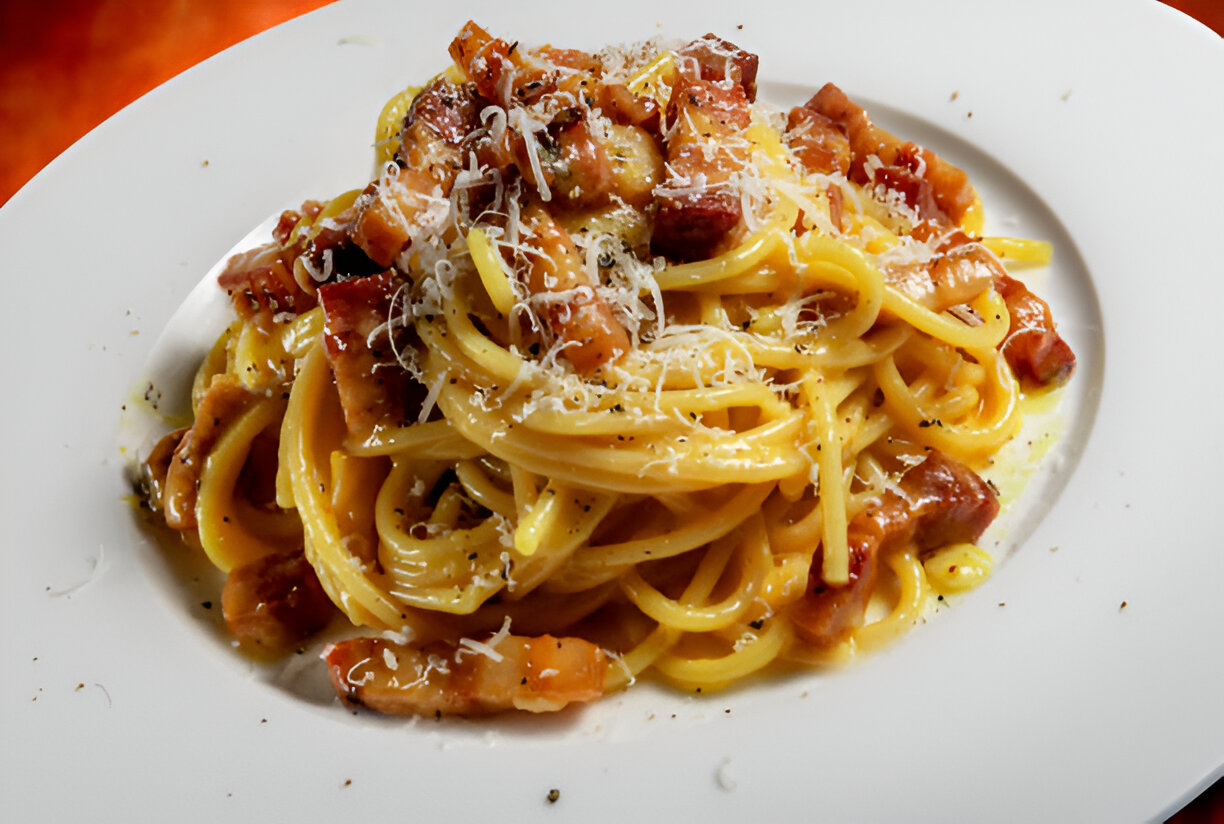
History of Pasta Carbonara
The origins of pasta carbonara are somewhat shrouded in mystery, with various theories attempting to pinpoint its creation. One popular belief is that it emerged in the mid-20th century, possibly gaining traction among Italian charcoal workers in the Apennine Mountains, known as "carbonai." These workers reportedly made a simple dish using readily available ingredients, such as pasta, eggs, and cured meat to fuel their demanding labor.
As the dish gained popularity, it became a beloved staple in Rome, with regional variations developing across Italy. Some areas incorporated different types of pasta, while others modified the meat component, using ingredients like pancetta in place of the traditional guanciale. Each variation reflects local tastes and ingredient availability, showcasing the adaptability of this iconic dish.
The evolution of pasta carbonara is a testament to the significance of regional cooking in Italy. It exemplifies how a simple assemblage of high-quality ingredients can transform into something extraordinary. Over the years, carbonara has not only become a fixture in Italian homes and trattorias but has also gained international acclaim, often featured on menus around the world. Its rise from humble origins to culinary stardom embodies the heart of Italian cuisine—rooted in tradition yet ever-evolving.
Ingredients for Pasta Carbonara
To create an authentic pasta carbonara, it is essential to use traditional ingredients that contribute to its signature flavor. The classic ingredients include:
- Pasta: Spaghetti or fettuccine are the most commonly used varieties.
- Guanciale or Pancetta: Guanciale, a cured pork cheek, is the preferred choice, but pancetta can be used as a substitute.
- Eggs: A combination of egg yolks and whole eggs is used to create a rich, creamy sauce.
- Pecorino Romano Cheese: This sharp, salty cheese is essential for authentic flavor.
- Black Pepper: Freshly cracked black pepper adds the necessary spice and depth.
Exploring the quality of these ingredients is crucial for achieving the best results. High-quality pasta, fresh eggs, and premium cheeses will elevate the dish significantly. If you're facing dietary restrictions, alternatives can be found. For instance, you could use gluten-free pasta or a plant-based cheese; however, these substitutions may alter the flavors and texture characteristic of traditional carbonara.
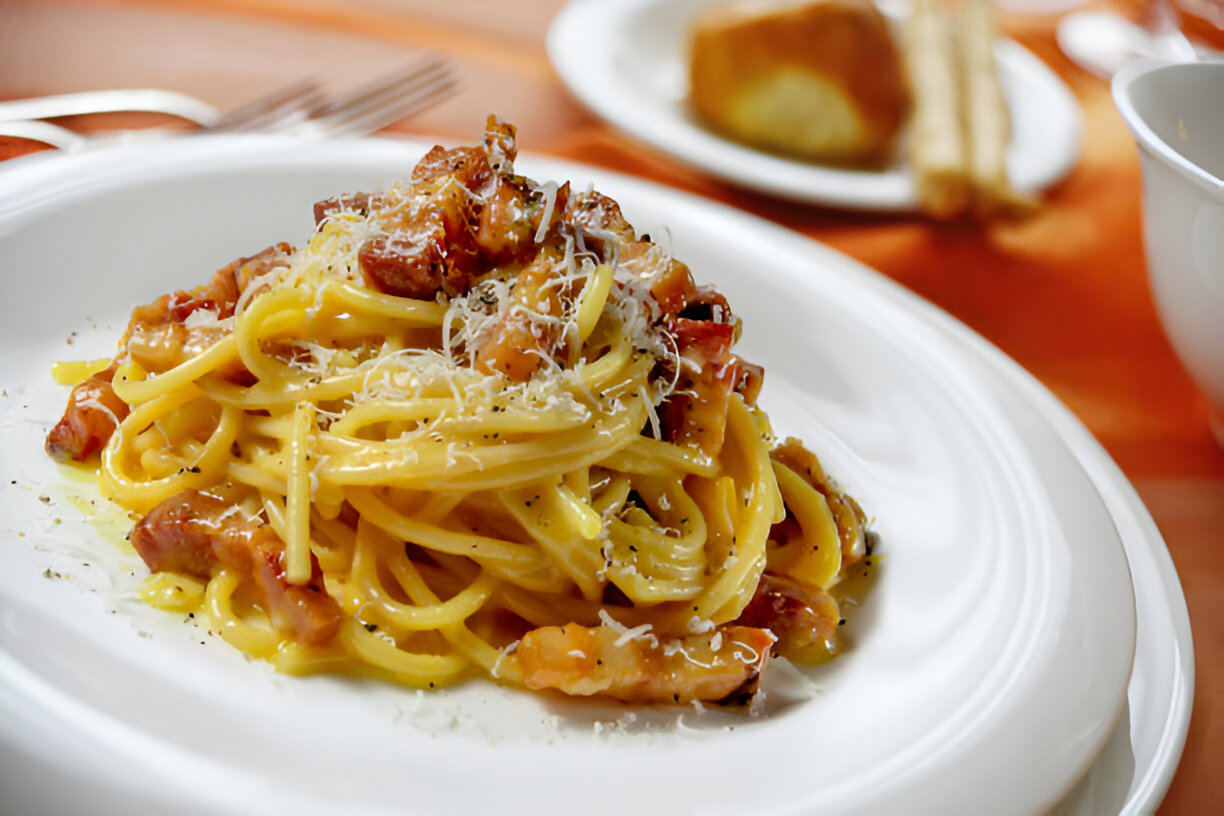
Ingredients for Pasta Carbonara
To create an authentic pasta carbonara, it is essential to use traditional ingredients that contribute to its signature flavor. The classic ingredients include:
- Pasta: Spaghetti or fettuccine are the most commonly used varieties.
- Guanciale or Pancetta: Guanciale, a cured pork cheek, is the preferred choice, but pancetta can be used as a substitute.
- Eggs: A combination of egg yolks and whole eggs is used to create a rich, creamy sauce.
- Pecorino Romano Cheese: This sharp, salty cheese is essential for authentic flavor.
- Black Pepper: Freshly cracked black pepper adds the necessary spice and depth.
Exploring the quality of these ingredients is crucial for achieving the best results. High-quality pasta, fresh eggs, and premium cheeses will elevate the dish significantly. If you're facing dietary restrictions, alternatives can be found. For instance, you could use gluten-free pasta or a plant-based cheese; however, these substitutions may alter the flavors and texture characteristic of traditional carbonara.
Detailed Carbonara Recipe
Ingredients
- Pasta: 400g spaghetti
- Guanciale or Pancetta: 150g, diced
- Eggs: 3 large yolks, 1 whole egg
- Pecorino Romano Cheese: 100g, grated
- Black Pepper: Freshly cracked, to taste
- Salt: For pasta water
Directions
- Prepare the ingredients: Before starting, it's essential to gather and prep all your ingredients. This ensures a smooth cooking process and prevents any delays during the recipe.
- Cook the Pasta: Bring a large pot of salted water to a boil. Add the spaghetti and cook until al dente according to package instructions. Reserve a cup of pasta water, then drain the pasta and set it aside.
- Cook the Guanciale: In a large skillet over medium heat, add the diced guanciale or pancetta. Fry until it's crispy and golden brown, which should take about 5-7 minutes. Remove the skillet from the heat.
- Create the Sauce: In a mixing bowl, whisk together the egg yolks, whole egg, and grated Pecorino Romano cheese until smooth. It's crucial to do this off the heat to prevent the eggs from scrambling. Gradually add a bit of the reserved pasta water to temper the mixture, creating a creamy sauce.
- Combine and Serve the Dish: Add the drained pasta to the skillet with guanciale. Toss to coat the pasta in the rendered fat. Then, slowly pour the egg and cheese mixture over the pasta, tossing quickly to combine. If the sauce is too thick, add a little more reserved pasta water until you achieve a creamy consistency. Serve immediately, topped with freshly cracked black pepper and additional cheese if desired.
Tips for Perfect Carbonara
To achieve the ideal carbonara:
- Pay attention to timing when combining the pasta and sauce to ensure the eggs don’t scramble.
- Serve the dish hot for the best experience, as it retains its creamy texture.
- Feel free to experiment with variations, such as adding vegetables like peas or mushrooms for added flavor and texture.
Common Mistakes to Avoid
When making pasta carbonara, avoid these common pitfalls:
- Overcooking the pasta can lead to a mushy texture, so be sure to cook it al dente.
- Incorrectly mixing the eggs into the pasta can result in scrambled eggs instead of a creamy sauce. Always work off the heat.
- Using cream or garlic deviates from the traditional recipe; authentic carbonara relies on precision with eggs, cheese, and guanciale.
Pairing Recommendations
Enhance your pasta carbonara experience with these pairing suggestions:
- Wine Pairings: A crisp white wine, such as Pinot Grigio or a light red like Chianti, complements the rich flavors of carbonara.
- Side Dishes: A fresh arugula salad with a simple vinaigrette can balance the richness of the dish.
- Ideal Serving Suggestions: Serve carbonara hot and garnish with extra cheese and black pepper for a finishing touch.
FAQs about Pasta Carbonara
- What is the difference between guanciale and pancetta? Guanciale is made from pork cheek and has a richer flavor, while pancetta is pork belly and is typically milder.
- Can I use cream in carbonara? Traditional carbonara does not include cream; the creaminess comes from the eggs and cheese.
- How do I store leftover carbonara? Store leftovers in an airtight container in the fridge for up to 2 days. Reheat gently.
- What pasta is best for carbonara? Spaghetti and fettuccine are traditional choices, but any long, thin pasta works well.
- What can I substitute for Pecorino Romano? Parmesan cheese can be used in place of Pecorino Romano, though the flavor will differ slightly.
Conclusion
Making authentic pasta carbonara is a delightful experience that showcases the charm of Italian cooking. With simple, high-quality ingredients and proper technique, you can create a dish that is both comforting and impressive. We encourage you to try this recipe, share it with family and friends, and enjoy the rich flavors and traditions behind this beloved culinary classic.
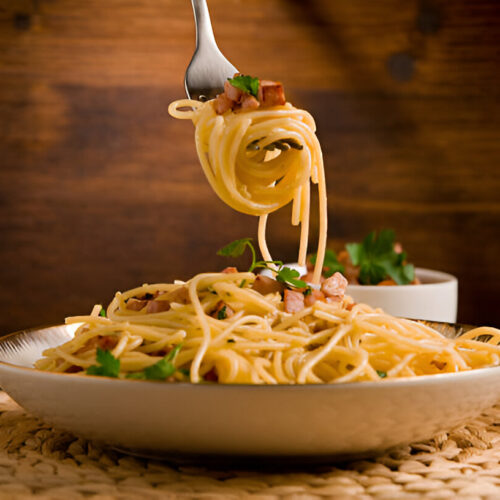
pasta carbonara recipe
Equipment
- 1 large pot
- 1 frying pan
- 1 mixing bowl
- 1 whisk
- 1 colander
- 1 tongs
Ingredients
- 400 g spaghetti
- 150 g pancetta or guanciale, diced Crispy bacon can be used as an alternative.
- 4 large eggs
- 100 g Pecorino Romano cheese, grated For a richer flavor, you can use a combination of Pecorino Romano and Parmesan cheese.
- to taste freshly ground black pepper
- to taste salt For pasta water.
- Fresh parsley Optional, for garnish.
Instructions
- Bring a large pot of salted water to a boil. Add the spaghetti and cook according to package instructions until al dente, usually about 8-10 minutes. Reserve about 1 cup of pasta water before draining the pasta.
- While the pasta cooks, heat a frying pan over medium heat. Add the diced pancetta or guanciale and cook until crispy, about 4-5 minutes. Remove from heat and set aside.
- In a mixing bowl, whisk together the eggs, grated Pecorino Romano cheese, and a generous amount of freshly ground black pepper until well combined.
- Once the spaghetti is cooked, quickly add the hot spaghetti to the frying pan with the pancetta. Toss to combine and let the residual heat cool slightly to avoid scrambling the eggs.
- Pour the egg and cheese mixture over the spaghetti while continuously tossing the pasta to create a creamy sauce. If the sauce is too thick, add a bit of reserved pasta water to reach your desired consistency.
- Taste and adjust seasoning with more black pepper or salt, as needed.
- Serve immediately, garnished with extra cheese and fresh parsley if desired.

